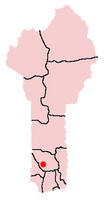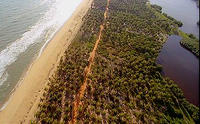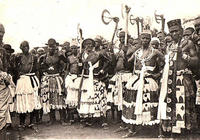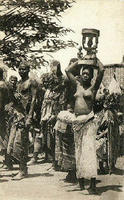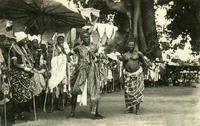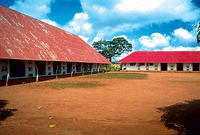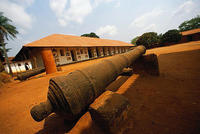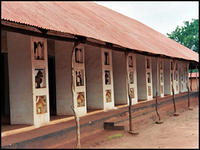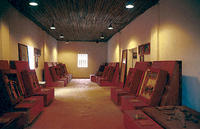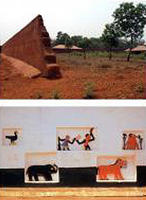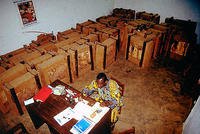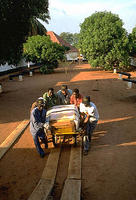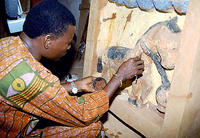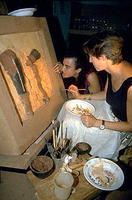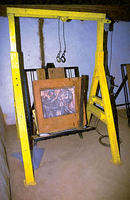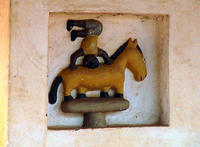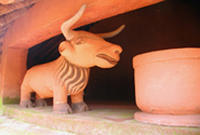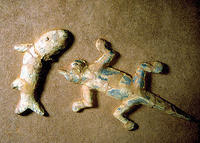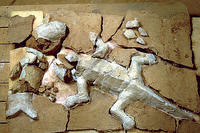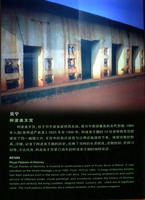You are in: Africa -> Benin -> Royal Palaces of Abomey, and traditional search or Image Gallery will yield results of this site only
Royal Palaces of Abomey
Up to 75 images are shown here. Click on each for more details or on Image Gallery for more images.
| Description: | In powerful Kingdom of Abomey, 12 kings succeeded one another in the span of time between 1625 and 1900. All of whom (except King Akaba, who had his own separate enclosure) built their palaces within the same cob-wall area, and thus keeping with the space and materials of previous palaces. The royal palaces of Abomey now stand as an anomalous memory of a vanished kingdom. --WHMNet paraphrase from the description at WHC Site, where additional information is available. | |
| Abomey is a town in Benin, formerly the capital of the ancient kingdom of Dahomey. The kingdom was established about 1625. The royal palaces of Abomey are a group of earthen structures built by the Fon people between the mid-17th and late 19th Centuries. One of the most famous and historically significant traditional sites in West Africa, the palaces form one of the UNESCO World Heritage Sites. The town was surrounded by a mud wall with a circumference estimated at six miles (Encyclopaedia Britannica, 1911), pierced by six gates, and protected by a ditch five feet deep, filled with a dense growth of prickly acacia, the usual defence of West African strongholds. Within the walls were villages separated by fields, several royal palaces, a market-place and a large square containing the barracks. In November 1892, Behanzin, the last independent reigning king of Dahomey, being defeated by French colonial forces, set fire to Abomey and fled northward. The French colonial administration rebuilt the town and connected it with the coast by a railroad. When UNESCO designated the royal palaces of Abomey as a World Heritage Site in 1985 it stated. From 1625 to 1900 twelve kings succeeded one another at the head of the powerful Kingdom of Abomey. With the exception of King Akaba, who used a separate enclosure, they each had their palaces built within the same cob-wall area, in keeping with previous palaces as regards the use of space and materials. The royal palaces of Abomey are a unique reminder of this vanished kingdom. From 1993, 50 of the 56 bas-reliefs that formerly decorated the walls of King Glèlè (now termed the 'Salle des Bijoux') have been located and replaced on the rebuilt structure. The bas-reliefs carry an iconographic program expressing the history and power of the Fon people. Today, the city is of less importance, but is still popular with tourists and as a centre for crafts. Its population in 1992 was 66,595. --Wikipedia. Text is available under the Creative Commons Attribution-ShareAlike License. | ||
| Source: | http://whc.unesco.org/en/list/323 | |
| Reference: | 1. UNESCO World Heritage Center, Site Page. | |



